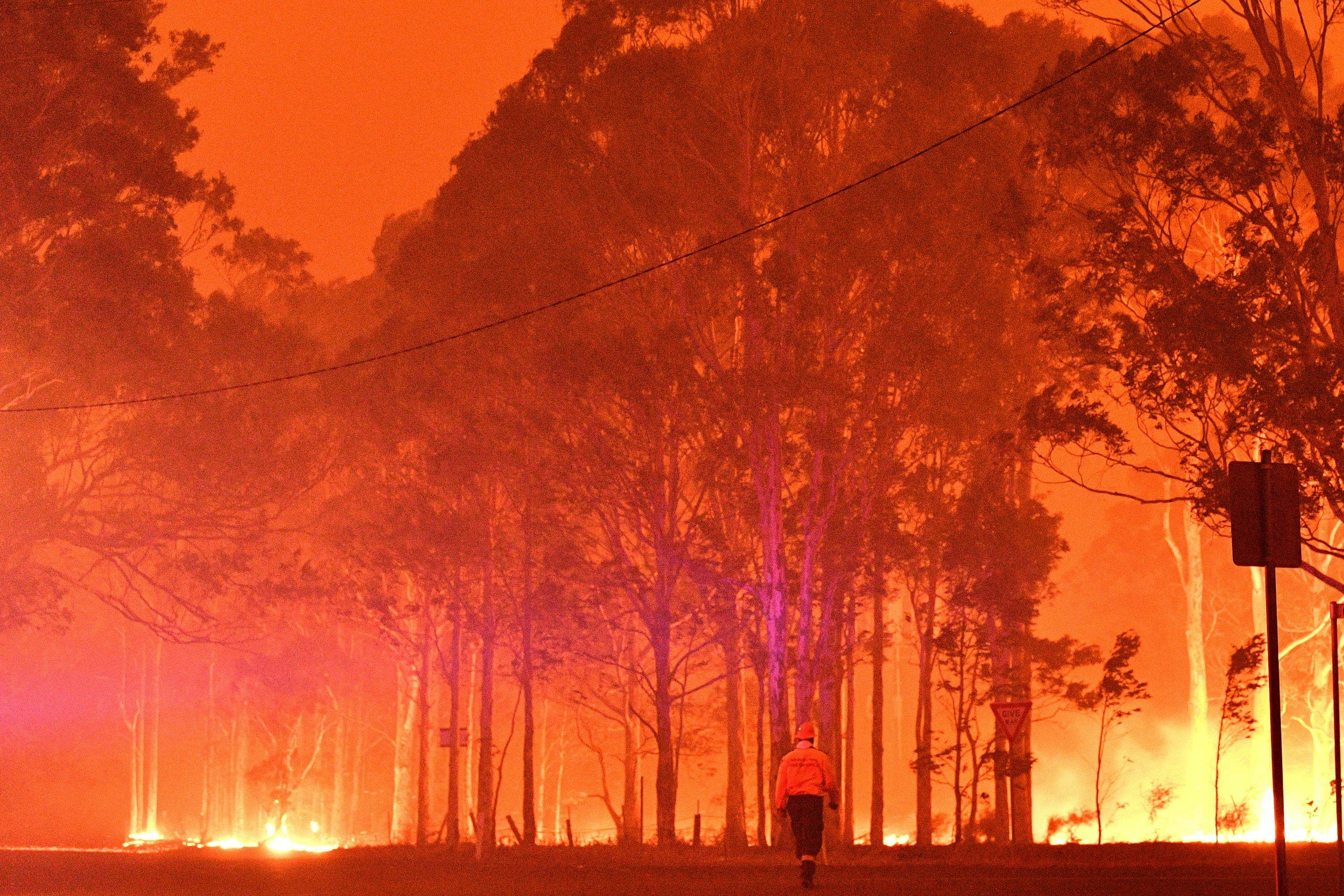Vital Tips for Bushfire Management to Make Sure Fire Protection

Recognizing Bushfire Risk Degrees
Recognizing the varying levels of bushfire danger is vital for effective preparation and prep work in mitigating prospective dangers to lives and properties. Bushfire risk degrees are usually categorized based on elements such as climate condition, gas availability, topography, and historic fire actions. By understanding these danger individuals, neighborhoods and degrees can proactively execute techniques to lower vulnerability and boost resilience despite possible bushfire events.
The very first degree of bushfire risk is low danger, where the chance of a bushfire occurring and causing substantial injury is minimal. This level commonly occurs during periods of low temperatures, modest humidity, and minimal wind speeds. Moderate danger degrees suggest a raised potential for bushfires due to intensifying weather condition problems or gas accessibility. Risky degrees represent a substantial hazard, with conditions helpful to fast fire spread and severe fire actions. Severe danger degrees are one of the most important, presenting impending danger to residential properties and lives due to severe weather and highly combustible gas.
Understanding these bushfire threat levels allows stakeholders to tailor their readiness and feedback activities appropriately, guaranteeing a efficient and proactive technique to bushfire monitoring.
Creating a Defensible Room
Effective bushfire management starts with establishing a defensible space around buildings to boost security versus possible fire risks. A defensible space is a buffer zone that produces a barrier in between a structure and the bordering combustible plants. This space works as a crucial line of protection, providing firefighters a risk-free location to operate and helping to reduce the threat of a fire infecting the building.
When creating a defensible space, it is vital to take into consideration the layout of the residential property and the surrounding landscape. Cleaning vegetation, particularly highly combustible plants, within a certain radius of the building can aid stop the quick spread of fires. Additionally, maintaining a well-irrigated zone around the residential or commercial property can even more improve its defensibility.
Normal maintenance of the defensible space is critical to ensure its performance. This consists of trimming overhanging branches, clearing dead vegetation, and maintaining the location without particles. By spending time and effort right into creating and keeping a defensible space, homeowner can significantly improve their opportunities of securing their homes and properties throughout a bushfire.
Carrying Out Fireproof Landscaping
When designing landscapes to minimize the risk of bushfires, incorporating fireproof elements is vital for boosting home security and minimizing fire threats. Select discover this info here plants with high wetness web content, reduced oil material, and very little dead vegetation to minimize the risk of fire spread.

Creating an Emergency Evacuation Strategy
Establishing an extensive emergency discharge strategy is important for guaranteeing the sites safety and security and well-being of people during possible bushfire incidents (BAL Assessment). An efficient emptying plan must outline clear procedures to follow in the occasion of a bushfire risk, consisting of assigned emptying courses, assembly points, and interaction protocols
To begin producing an emergency situation evacuation strategy, it is important to analyze the particular risks and susceptabilities of your location. Identify several discharge courses that cause safe areas far from the fire, thinking about elements such as surface, roadway availability, and potential threats. Develop interaction networks to sharp residents of an upcoming evacuation, utilizing approaches such as sirens, text notifies, or door-to-door alerts.
Frequently evaluation and exercise the evacuation strategy with all residents or community members to guarantee everybody understands their obligations and roles. Conduct drills to evaluate the performance of the strategy and make any type of needed changes. By having a well-prepared emptying strategy in position, you can improve the possibilities of a risk-free and orderly discharge during a bushfire emergency situation.
Maintaining Fire Safety Equipment
After establishing a detailed emergency situation evacuation plan for bushfire cases, it is critical to focus on BAL Report the regular maintenance of fire security equipment to ensure optimum performance and preparedness. Normal maintenance of fire safety tools such as fire extinguishers, smoke detectors, fire alarms, and automatic sprinkler is vital in guarding lives and residential or commercial property throughout a bushfire. Performing regular inspections, screening, and maintenance of these gadgets by qualified experts is important to assure they are in functioning order when needed.
Fire extinguishers must be examined frequently for stress degrees, visible damages, and proper capability. By diligently maintaining fire safety tools, individuals can improve their preparedness and response capabilities in the occasion of a bushfire.
Final Thought
Finally, efficient bushfire administration entails comprehending risk degrees, creating defensible spaces, executing fireproof landscaping, creating emptying plans, and maintaining fire safety and security devices. By following these necessary tips, people can make sure better fire defense and safety and security for their communities and residential or commercial properties. It is essential to prioritize aggressive steps to minimize the dangers related to bushfires and to be prepared for emergency situations.
By understanding the subtleties of bushfire risk levels, creating defensible rooms, executing fire-resistant landscaping, developing detailed evacuation plans, and guaranteeing the maintenance of fire safety tools, communities and individuals can substantially bolster their durability versus the devastations of wildfires - BAL Assessment. These pointers are not just critical for protecting versus prompt fire hazards however additionally for fostering long-lasting fire defense strategies that can make a significant difference in the face of rising bushfire risks
High-risk degrees indicate a substantial risk, with problems helpful to rapid fire spread and extreme fire behavior. Routine upkeep of fire safety and security tools such as fire extinguishers, smoke detectors, fire alarm systems, and lawn sprinkler systems is essential in protecting lives and building during a bushfire.In conclusion, effective bushfire monitoring involves understanding risk degrees, developing defensible rooms, implementing fire-resistant landscaping, establishing emptying plans, and maintaining fire security tools.